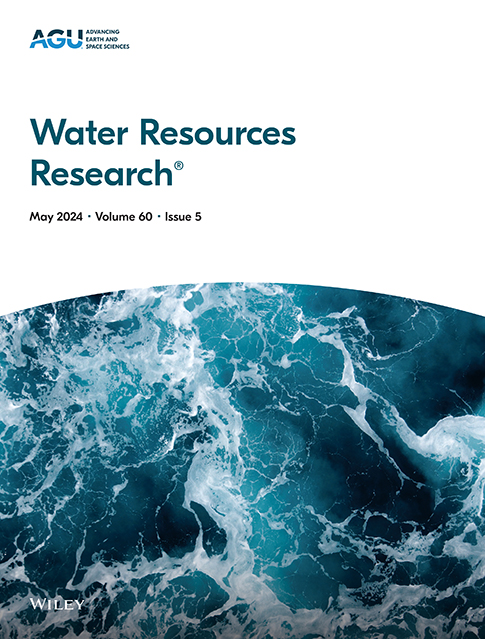Constraining the Modern Hydrological Balance of Bear Lake, Utah-Idaho: Insights From Stable Isotopes (δ18O and δ2H)
IF 4.6
1区 地球科学
Q2 ENVIRONMENTAL SCIENCES
引用次数: 0
Abstract
Freshwater lakes are vital water resources, especially in the context of a changing climate. Supplementing existing hydrological methods to monitor lake levels may greatly improve resource management, particularly in drought-prone regions. In this study, we performed dual-isotope (δ18O and δ2H) calculations to model the hydrological balance of Bear Lake, Utah-Idaho. The lake is a critical water resource and site for paleoclimate studies of the latest Pleistocene. Using the Craig-Gordon isotopic mass balance model, we simultaneously constrained unknown fluxes, including groundwater discharge and particularly evaporation, which is typically under-constrained due to inconsistencies across existing methods. Data from community databases and sampling campaigns in 2022 and 2023 were utilized to derive an evaporation rate of 2.18 × 108 m3/yr (±4.94 × 106 m3/yr, 1σ using δ18O; ±3.47 × 106 m3/yr, 1σ using δ2H) at a calculated relative humidity of 0.62 above the lake. Detailed analysis of the sensitivity of the model revealed that parameters related to atmospheric moisture, particularly humidity and its isotopic composition, significantly influence evaporation estimates. Using carbonate-based isotope data, we leveraged this sensitivity to provide insights in the evaporation and humidity at Bear Lake during different time periods. This study shows the potential of using modern water isotopic composition to aid with interpreting carbonate-based paleoclimate data sets and informing current and future water resource management practices.求助全文
约1分钟内获得全文
求助全文
来源期刊

Water Resources Research
环境科学-湖沼学
CiteScore
8.80
自引率
13.00%
发文量
599
审稿时长
3.5 months
期刊介绍:
Water Resources Research (WRR) is an interdisciplinary journal that focuses on hydrology and water resources. It publishes original research in the natural and social sciences of water. It emphasizes the role of water in the Earth system, including physical, chemical, biological, and ecological processes in water resources research and management, including social, policy, and public health implications. It encompasses observational, experimental, theoretical, analytical, numerical, and data-driven approaches that advance the science of water and its management. Submissions are evaluated for their novelty, accuracy, significance, and broader implications of the findings.
 求助内容:
求助内容: 应助结果提醒方式:
应助结果提醒方式:


